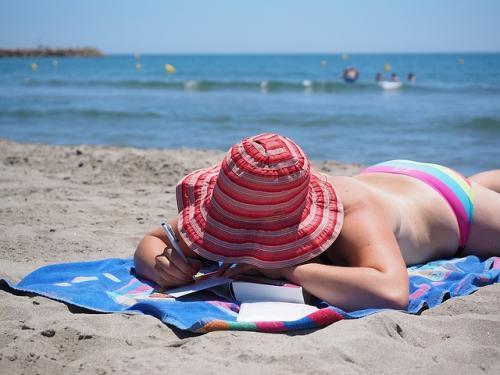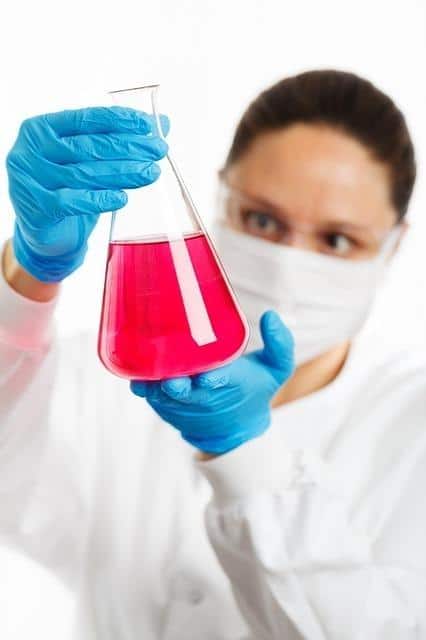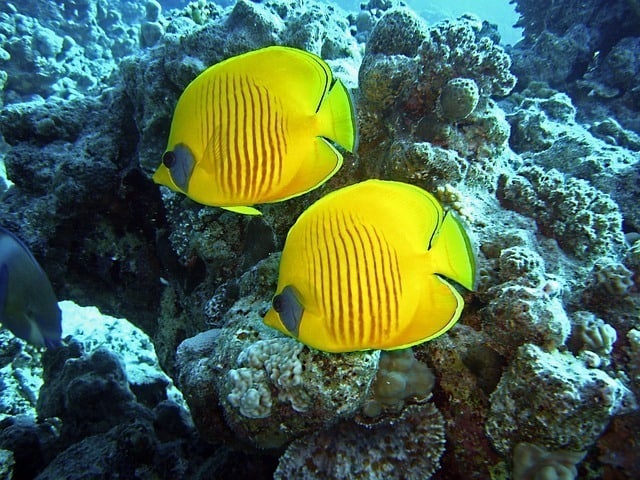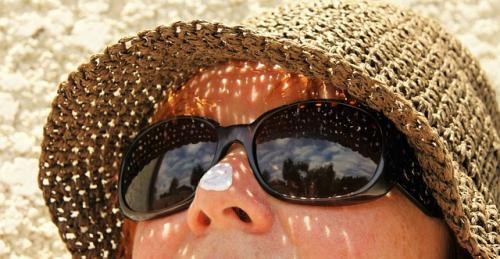There is a very real sunscreen controversy. How effective is sunscreen? Have you ever wondered? Will it really protect you from the dreaded skin cancer? Is the toxic sunscreen with the pretty label causing you more harm than good?
So you’ve technically received your 15 to 30 minutes of direct sunlight for the day. But you are still not ready ro head inside. The hot sun is looming over you. You know you need to get yourself protected from its powerful UV rays. You have the option to wear a hat or probably add a layer of clothing … but of course, who wants to do that when it’s too hot and humid? And so you grab your trusty sunscreen lotion and start applying.
But wait … are you sure you want to apply just anything to your skin?
The Truth About Sunscreen
The Environmental Working Group (EWG) did an analysis on the safety and efficacy of U.S. made sunscreens. And what they’ve discovered was pretty disappointing: A lot of sunscreens don’t deliver what they promise.
Here’s their statement:
“We have found that, due to the weak federal rules set by the Food and Drug Administration, many inferior products reach store shelves, touting overstated sun protection claims.”
What’s more, despite the record growth of the sunscreen market, Americans suffering from melanoma or skin cancer are continuously growing. And that says just one thing: most sunscreens do not work as effectively as advertised.
So, how effective is sunscreen in protecting you against skin cancer?
Here are four truths about sunscreen use that could have contributed to the growing number of melanoma cases in the U.S.:
1. Beachgoers are using poor quality “broad spectrum”
According to EWG, UVA rays, which are usually found in tanning beds, are known to increase the risk of melanoma. And if beachgoers are using poor quality “broad spectrum”, with two days of use, they will be getting the same amount of UVA exposure as that in the tanning salon.
 2. People are overconfident with their sunscreens
2. People are overconfident with their sunscreens
People rely too much on their sunscreen for UV protection that they don’t employ other sun protection measures. And when they do this, they get more UV exposure, therefore, increasing their risk of getting skin cancer.
3. People pick sunscreens based on their SPF value
According to EWG, a sunscreen’s sun protection factor, SPF, is not an indication of its UV protection abilities. SPF is the ability of a sunscreen to protect you from sunburns. Most of us think that if they don’t get sunburns, they are protected from UV damage. But EWG says that is not the case.
“Many sunscreens don’t provide adequate protection from UVA rays. While higher-energy UVB rays are the primary cause of sunburns and pre-cancerous DNA mutations, lower-energy UVA rays cause tanning and more subtle damage. They penetrate deeper into skin tissue and are most responsible for generating free radicals – energized molecules that are highly reactive and can damage DNA and skin cells, promote skin aging, and cause skin cancer.”
4. Some people do not apply sunscreen as often as needed
Most people think a single application of sunscreen will already get them protected all throughout the day … but this is not true. According to SkinCancer.org, reapplying sunscreen is just as important as putting it on in the first place. That’s why if you’re using sunscreen, you should apply it every 2 hours. This will enable you to get the full protection that it promises to give.
Health Risks of Using Sunscreen
Did you know that your skin is like a sponge? This means that whatever you put on your skin will be directly absorbed into your body. Healthy Beginnings Magazine puts it this way: “What comes in contact with the skin is absorbed and enters the bloodstream quickly.”
 Now, with this fact in mind, imagine how many times you need to apply and reapply sunscreen … that’s supposed to be every two hours. And what if your sunscreen contains harmful or toxic chemicals? Then you are subjecting yourself to more harm rather than actually protecting yourself.
Now, with this fact in mind, imagine how many times you need to apply and reapply sunscreen … that’s supposed to be every two hours. And what if your sunscreen contains harmful or toxic chemicals? Then you are subjecting yourself to more harm rather than actually protecting yourself.
Environmental Working Group (EWG) has stressed that the use of sunscreen can possibly bring “trouble”. And that is mainly because of the chemical ingredients present in sunscreens.
“Sunscreens commonly include ingredients that act as “penetration enhancers” and help the product adhere to skin. As a result, many sunscreen chemicals are absorbed into the body and can be measured in blood, breast milk and urine samples.”
What are the most active ingredients found in most chemical sunscreens? According to EWG, these are: oxybenzone, avobenzone, octisalate, octocrylene, homosalate, and octinoxat.
Now, the scary thing about most sunscreens is that they are toxic. EWG reviewed the toxicity levels of the most common ingredients in sunscreens. They concluded that oxybenzone, which is present in nearly 65% of non-mineral sunscreens in EWG’s database, is the most alarming.
What is Oxybenzone?
According to The Dermatology Review, oxybenzone is one of the most common active ingredients that chemists use in manufacturing sunscreen for UV protection. Aside from that, it is also used to strengthen and stabilize the color and scent of skin care products.
 Oxybenzone has positive effects on the skin … and this includes helping to mitigate sunburns, diminish long-term skin damage from the sun, and slow down the development of dark spots on the face caused by UV radiation.
Oxybenzone has positive effects on the skin … and this includes helping to mitigate sunburns, diminish long-term skin damage from the sun, and slow down the development of dark spots on the face caused by UV radiation.
However, despite its positive effects on the skin, oxybenzone has been tagged as a very harmful active ingredient. This is made more risky by the fact that it easily penetrates the skin; therefore, quickly entering the bloodstream.
The Environmental Working Group has made it known that this chemical can possibly bring danger in several forms. This was discussed in Truth in Aging:
“Despite its sun protective abilities, it has been shown to penetrate the skin and cause photo-sensitivity. As a photocarcinogen, it has demonstrated an increase in the production of harmful free radicals and an ability to attack DNA cells; for this reason, it is believed to be a contributing factor in the recent rise of melanoma cases with sunscreen users. Some studies have shown it to behave similarly to the hormone estrogen, suggesting that it may cause breast cancer. It has also been linked to contact eczema and allergies.”
However, if you are really determined to use sunscreens, EWG recommends using non-toxic sunscreen or mineral sunscreens. Make sure that they only contain natural ingredients. Mineral sunscreens have zinc oxide and/or titanium dioxide. However, according to EWG, some mineral sunscreens contain chemical ingredients … which of course, puts you at risk as well.
Sunscreen Effects on the Environment
Sunscreens not only have detrimental effects on our health. Toxic sunscreens or chemical sunscreens can cause harm to our environment. And this is a very serious matter.
Yes, we apply sunscreen to protect ourselves. But the sad thing is the environment is being put at risk. Specifically, our beautiful coral reefs.
And the main culprit? It’s the famous oxybenzone.
 A Time Magazine article cites a study published in the journal, Archives of Environmental Contamination and Toxicology. And this specifies the toxic effects of oxybenzone on young corals.
A Time Magazine article cites a study published in the journal, Archives of Environmental Contamination and Toxicology. And this specifies the toxic effects of oxybenzone on young corals.
“The chemical oxybenzone has toxic effects on young coral that causes endocrine disruption, DNA damage and death of coral, among other the problems. Oxybenzone also exacerbates coral bleaching, a process by which coral reject symbiotic organisms and lose their color. Bleaching has been particularly prevalent in recent years due to rising sea temperatures.”
Hawaii’s Sunscreen Ban
Chemical sunscreens have harmful risks on coral reefs. That’s why Hawaii has made a move to ban the use of sunscreens with oxybenzone. This sunscreen ban in Hawaii started in 2018.
Senator Will Espero has told Raw Elements USA: “A ban is the right thing to do in order to protect our fragile marine eco-system. Since our ocean environment is key to our tourism industry and our economic lifeline, banning a chemical substance that harms our coral and other marine animals should be a top priority [next year] in the state legislature.”
Raw Elements, a producer of all-natural, organic sunscreen, has partnered with the Hawaiian airlines to save Hawaii’s reefs in a campaign called Protect the Reef Sweepstakes.
Safe Alternatives to Using Sunscreen
Now that you know the possible risk of using sunscreen not only to your body but also to the environment, you might be wondering, “What can I use instead of sunscreen?”
Well, good news! There are a lot of safe alternatives to using sunscreen. In fact, the Environmental Working Group advises that sunscreen should be your last resort for protection against UV rays.
Here are some alternatives to using sunscreen as presented in EWG and SunWarrior websites:
 1. Wear clothes
1. Wear clothes
It turns out that if you want to avoid using sunscreens, you definitely have to wear clothes. They are the best sunblock you could ever have. Why? Because they reflect or absorb sunlight. Wearing clothes will reduce your burn risk by 27%.
2. Go for the shade
If you’re going out on a picnic, pick a shady area. Perhaps you can find a tree or better yet, bring your own umbrella or tent with you.
Will you be bringing an infant? Always keep them under the shade (babies under six months cannot wear sunscreen, so keep them covered.)
3. Wear sunglasses
You wear sunglasses not because you want to make a fashion statement. You wear them because it protects your eyes from UV radiation. That’s why you should make sure to wear them especially when you’re out in the sun.
4. Check UV Index
According to the National Environment Agency, the UV Index or ultraviolet index “is an international standard index that describes the level of solar UV radiation at the earth’s surface at a given time.” This is a very important tool that you can use. This will help you plan your outdoor activities without getting too much sun exposure. Generally, early morning and late afternoon are the best times to be outdoors when the sun is out.
Here’s a UV Index Scale from US Environmental Protection Agency.
5. Eat Well
According to SunWarrior.com, your diet can actually help protect your skin from UV damage. You should eat foods that have plenty of healthy fats and antioxidants will. Choose dark, colorful fruits and veggies that are rich in carotenoids and other powerful antioxidants. You should also eat nuts, coconut oil, avocados, sea vegetable, seeds, and microalgae for best results.
6. Use natural oils instead of sunscreen
There are plenty of natural products that you can use as “sunscreen”. This includes red raspberry seed oil, sesame oil, carrot seed oil, wheat germ oil, and other seed and nut oils. These natural oils have SPFs ranging from 20-50 SPF. They are also able to block harmful UV rays.
 7. Use Aloe Vera
7. Use Aloe Vera
Most people know that aloe vera is used to soothe sunburns or any type of burn. What most don’t know is that you can actually apply it before you go outdoors to serve as your sunblock.
8. Use natural homemade sunscreen
You don’t need to buy sunsreen if you want to use one. You can actually make one!
How? You can use natural ingredients such as beeswax and zinc oxide powder to come up with your own healthy sunscreen.
If you want to learn how to make homemade sunscreen, here’s a very nice recipe by Wellness Mama.
Ready to Start Using the Alternatives to Sunscreen?
So there you have it.
As you can see, there is definitely a sunscreen controversy. Do you know how effective your favorite sunscreen is? And, is your sunscreen safe for you and the environment?
Are you concerned with having to apply sunscreen every two hours? Well, you now know that you have a lot of options.
Wearing sunscreen has its benefits. But we also know how easy it is for the skin to absorb toxins. That’s why we at Delta Discovery Center recommend that you use natural products to avoid complications.
Have been wearing sunscreen for a long time now and unsure whether or not it is a non-toxic sunscreen? We can help you. We have a holistic process called an ionic foot detox bath. This will flush out the toxic ingredients from your body through a foot bath.

 2. People are overconfident with their sunscreens
2. People are overconfident with their sunscreens 1. Wear clothes
1. Wear clothes